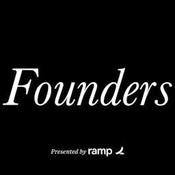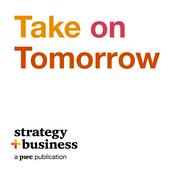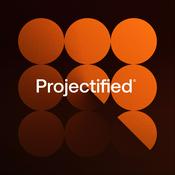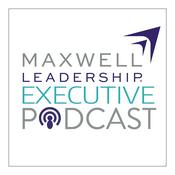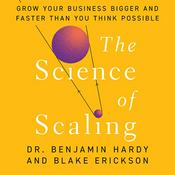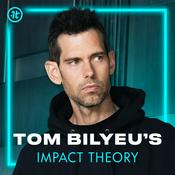Available Episodes
5 of 587
- AI, Quantum, and the Changing Role of Cybersecurity | ISC2 Security Congress 2025 Coverage with Jon France, Chief Information Security Officer at ISC2 | On Location with Sean Martin and Marco CiappelliWhat Security Congress Reveals About the State of CybersecurityThis discussion focuses on what ISC2 Security Congress represents for practitioners, leaders, and organizations navigating constant technological change. Jon France, Chief Information Security Officer at ISC2, shares how the event brings together thousands of cybersecurity practitioners, certification holders, chapter leaders, and future professionals to exchange ideas on the issues shaping the field today. Themes That Stand OutAI remains a central point of attention. France notes that organizations are grappling not only with adoption but with the shift in speed it introduces. Sessions highlight how analysts are beginning to work alongside automated systems that sift through massive data sets and surface early indicators of compromise. Rather than replacing entry-level roles, AI changes how they operate and accelerates the decision-making path. Quantum computing receives a growing share of focus as well. Attendees hear about timelines, standards emerging from NIST, and what preparedness looks like as cryptographic models shift. Identity-based attacks and authorization failures also surface throughout the program. With machine-driven compromises becoming easier to scale, the community explores new defenses, stronger controls, and the practical realities of machine-to-machine trust. Operational technology, zero trust, and machine-speed threats create additional urgency around modernizing security operations centers and rethinking human-to-machine workflows. A Place for Every Stage of the CareerFrance describes Security Congress as a cross-section of the profession: entry-level newcomers, certification candidates, hands-on practitioners, and CISOs who attend for leadership development. Workshops explore communication, business alignment, and critical thinking skills that help professionals grow beyond technical execution and into more strategic responsibilities. Looking Ahead to the Next CongressThe next ISC2 Security Congress will be held in October in the Denver/Aurora area. France expects AI and quantum to remain key themes, along with contributions shaped by the call-for-papers process. What keeps the event relevant each year is the mix of education, networking, community stories, and real-world problem-solving that attendees bring with them.The ISC2 Security Congress 2025 is a hybrid event taking place from October 28 to 30, 2025 Coverage provided by ITSPmagazineGUEST:Jon France, Chief Information Security Officer at ISC2 | On LinkedIn: https://www.linkedin.com/in/jonfrance/HOST:Sean Martin, Co-Founder, ITSPmagazine and Studio C60 | Website: https://www.seanmartin.comFollow our ISC2 Security Congress coverage: https://www.itspmagazine.com/cybersecurity-technology-society-events/isc2-security-congress-2025Catch all of our event coverage: https://www.itspmagazine.com/technology-and-cybersecurity-conference-coverageISC2 Security Congress: https://www.isc2.orgNIST Post-Quantum Cryptography Standards: https://csrc.nist.gov/projects/post-quantum-cryptographyISC2 Chapters: https://www.isc2.org/chaptersWant to share an Event Briefing as part of our event coverage? Learn More 👉 https://itspm.ag/evtcovbrfWant Sean and Marco to be part of your event or conference? Let Us Know 👉 https://www.studioc60.com/performance#ideasKEYWORDS: cybersecurity, ai security, isc2 congress, quantum computing, identity attacks, zero trust, soc automation, cyber jobs, cyber careers, cyber leadership, security operations, threat intelligence, machine speed, authentication, authorization, sean martin, jon france, identity, soc, certification, leadership, event coverage, on location, conference Hosted by Simplecast, an AdsWizz company. See pcm.adswizz.com for information about our collection and use of personal data for advertising.--------26:22
- A Practical Look at Incident Handling: How a Sunday Night Bug Bounty Email Triggered a Full Investigation | A Screenly Brand Spotlight Conversation with Co-founder of Screenly, Viktor PeterssonThis episode focuses on a security incident that prompts an honest discussion about transparency, preparedness, and the importance of strong processes. Sean Martin speaks with Viktor Petersson, Founder and CEO of Screenly, who shares how his team approaches digital signage security and how a recent alert from their bug bounty program helped validate the strength of their culture and workflows.Screenly provides a secure digital signage platform used by organizations that care deeply about device integrity, uptime, and lifecycle management. Healthcare facilities, financial services, and even NASA rely on these displays, which makes the security posture supporting them a priority. Viktor outlines why security functions best when embedded into culture rather than treated as a compliance checkbox. His team actively invests in continuous testing, including a structured bug bounty program that generates a steady flow of findings.The conversation centers on a real event: a report claiming that more than a thousand user accounts appeared in a public leak repository. Instead of assuming the worst or dismissing the claim, the team mobilized within hours. They validated the dataset, built correlation tooling, analyzed how many records were legitimate, and immediately reset affected accounts. Once they ruled out a breach of their systems, they traced the issue to compromised end user devices associated with previously known credential harvesting incidents.This scenario demonstrates how a strong internal process helps guide the team through verification, containment, and communication. Viktor emphasizes that optional security features only work when customers use them, which is why Screenly is moving to passwordless authentication using magic links. Removing passwords eliminates the attack vector entirely, improving security for customers without adding friction.For listeners, this episode offers a clear look at what rapid response discipline looks like, how bug bounty reports can add meaningful value, and why passwordless authentication is becoming a practical way forward for SaaS platforms. It is a timely reminder that transparency builds trust, and security culture determines how confidently a team can navigate unexpected events.Learn more about Screenly: https://itspm.ag/screenly1oNote: This story contains promotional content. Learn more.GUESTViktor Petersson, Co-founder of Screenly | On LinkedIn: https://www.linkedin.com/in/vpetersson/RESOURCESLearn more and catch more stories from Screenly: https://www.itspmagazine.com/directory/screenlyLinkedIn Post: https://www.linkedin.com/posts/vpetersson_screenly-security-incident-response-how-activity-7393741638918971392-otkkBlog: Security Incident Response: How We Investigated a Data Leak and What We're Doing Next: https://www.screenly.io/blog/2025/11/10/security-incident-response-magic-links/Are you interested in telling your story?▶︎ Full Length Brand Story: https://www.studioc60.com/content-creation#full▶︎ Spotlight Brand Story: https://www.studioc60.com/content-creation#spotlightKeywords: sean martin, marco ciappelli, viktor petersson, security, authentication, bugbounty, signage, incidentresponse, breaches, cybersecurity, brand story, brand marketing, marketing podcast, brand story podcast, brand spotlight Hosted by Simplecast, an AdsWizz company. See pcm.adswizz.com for information about our collection and use of personal data for advertising.--------17:48
- Inside the Economics That Shape Modern Cybersecurity Innovations: How the Cybersecurity Startup Engine Really Works | A Conversation with Investor and Author, Ross Haleliuk | Redefining CyberSecurity with Sean Martin⬥EPISODE NOTES⬥Understanding the Startup Engine Behind CybersecurityThis episode brings Sean Martin together with Ross Haleliuk, author, investor, product leader, and creator of Venture Insecurity, for a candid look at the forces shaping cybersecurity startups today. Ross shares how his decade of product leadership and long involvement in the security community give him a unique perspective on what drives founders, what creates market gaps, and why new companies keep entering a space already full of tools.Why Security Produces So Many ProductsRoss explains that the large number of security tools is not evidence of an industry losing control. Instead, it reflects a technology ecosystem where entrepreneurship has become easier and where attackers, not practitioners, define what defenders need. Because threats shift constantly, security leaders must always look for clues on what could fail next. That constant uncertainty fuels innovation.What Motivates FoundersDespite outside assumptions, Ross observes that most founders are motivated by the problems they have lived themselves. Some come from enterprise teams. Others come from military backgrounds. Many find traction with early open source work. Few come into cybersecurity to chase quick wins, and most do not survive long enough to chase profits even if they wanted to.Security as Business EnablementSean and Ross discuss the role of security as a business driver. In regulated sectors, companies invest because they must. In technology companies, strong security is a sales enabler that gives customers confidence to use their products. Outside of tech, the priority is more about resilience and operational continuity.How Buyers Should Think About StartupsRoss outlines the tradeoffs. Startups deliver speed, responsiveness, fresh architecture, and modern user experience. Large vendors provide stability, predictability, and broad coverage. Neither is perfect. Security leaders should decide based on the importance of the capability, the level of influence they want, and the outcomes they need.This conversation highlights the practical realities behind the security products organizations choose and the people who build them. Listeners will hear both the optimism and the honesty that define today’s cybersecurity innovation economy.⬥GUEST⬥Ross Haleliuk, Security product leader, author, advisor, board member and investor | On LinkedIn: https://www.linkedin.com/in/rosshaleliuk/⬥HOST⬥Sean Martin, Co-Founder at ITSPmagazine and Host of Redefining CyberSecurity Podcast | On LinkedIn: https://www.linkedin.com/in/imsmartin/ | Website: https://www.seanmartin.com⬥RESOURCES⬥Inspiring Blog: https://ventureinsecurity.net/p/not-every-security-leader-works-at⬥ADDITIONAL INFORMATION⬥✨ More Redefining CyberSecurity Podcast: 🎧 https://www.seanmartin.com/redefining-cybersecurity-podcastRedefining CyberSecurity Podcast on YouTube:📺 https://www.youtube.com/playlist?list=PLnYu0psdcllS9aVGdiakVss9u7xgYDKYq📝 The Future of Cybersecurity Newsletter: https://www.linkedin.com/newsletters/7108625890296614912/Contact Sean Martin to request to be a guest on an episode of Redefining CyberSecurity: https://www.seanmartin.com/contact⬥KEYWORDS⬥sean martin, ross haleliuk, cybersecurity, startups, venture security, founders, innovation, risk, resilience, product strategy, redefining cybersecurity, cybersecurity podcast, redefining cybersecurity podcast Hosted by Simplecast, an AdsWizz company. See pcm.adswizz.com for information about our collection and use of personal data for advertising.--------47:10
- Beg Bounty: The New Wave of Unrequested Bug Claims and What They Mean | A Conversation with Casey Ellis | Redefining CyberSecurity with Sean Martin⬥EPISODE NOTES⬥Understanding Beg Bounties and Their Growing ImpactThis episode examines an issue that many organizations have begun to notice, yet often do not know how to interpret. Sean Martin is joined by Casey Ellis, Founder of Bugcrowd and Co-Founder of disclose.io, to break down what a “beg bounty” is, why it is increasing, and how security leaders should think about it in the context of responsible vulnerability handling.Bug Bounty vs. Beg BountyCasey explains the core principles of a traditional bug bounty program. At its core, a bug bounty is a structured engagement in which an organization invites security researchers to identify vulnerabilities and pays rewards based on severity and impact. It is scoped, governed, and linked to an established policy. The process is predictable, defensible, and aligned with responsible disclosure norms.A beg bounty is something entirely different. It occurs when an unsolicited researcher claims to have found a vulnerability and immediately asks whether the organization offers incentives or rewards. In many cases, the claim is vague or unsupported and is often based on automated scanner output rather than meaningful research. Casey notes that these interactions can feel like unsolicited street windshield washing, where the person provides an unrequested service and then asks for payment.Why It Matters for CISOs and Security TeamsSecurity leaders face a difficult challenge. These messages appear serious on the surface, yet most offer no actionable details. Responding to each one triggers incident response workflows, consumes time, and raises unnecessary internal concern. Casey warns that these interactions can create confusion about legality, expectations, and even the risk of extortion.At the same time, ignoring every inbound message is not a realistic long-term strategy. Some communications may contain legitimate findings from well-intentioned researchers who lack guidance. Casey emphasizes the importance of process, clarity, and policy.How Organizations Can PrepareAccording to Casey, the most effective approach is to establish a clear vulnerability disclosure policy. This becomes a lightning rod for inbound security information. By directing researchers to a defined path, organizations reduce noise, set boundaries, and reinforce safe communication practices.The episode highlights the need for community norms, internal readiness, and a shared understanding between researchers and defenders. Casey stresses that good-faith researchers should never introduce payment into the first contact. Organizations should likewise be prepared to distinguish between noise and meaningful security input.This conversation offers valuable context for CISOs, security leaders, and business owners navigating the growing wave of unsolicited bug claims and seeking practical ways to address them.⬥GUEST⬥Casey Ellis, Founder and Advisor at Bugcrowd | On LinkedIn: https://www.linkedin.com/in/caseyjohnellis/⬥HOST⬥Host: Sean Martin, Co-Founder at ITSPmagazine and Host of Redefining CyberSecurity Podcast | On LinkedIn: https://www.linkedin.com/in/imsmartin/ | Website: https://www.seanmartin.com⬥RESOURCES⬥Inspiring Post: https://www.linkedin.com/posts/caseyjohnellis_im-thinking-we-should-start-charging-bug-activity-7383974061464453120-caEWDisclose.io: https://disclose.io/⬥ADDITIONAL INFORMATION⬥✨ More Redefining CyberSecurity Podcast: 🎧 https://www.seanmartin.com/redefining-cybersecurity-podcastRedefining CyberSecurity Podcast on YouTube:📺 https://www.youtube.com/playlist?list=PLnYu0psdcllS9aVGdiakVss9u7xgYDKYq📝 The Future of Cybersecurity Newsletter: https://www.linkedin.com/newsletters/7108625890296614912/Contact Sean Martin to request to be a guest on an episode of Redefining CyberSecurity: https://www.seanmartin.com/contact⬥KEYWORDS⬥cybersecurity, bug bounty, vulnerability disclosure, beg bounty, hacking, researcher, ciso, security teams, risk management, web security, security policy, vulnerability reporting, cyber risk, bugcrowd, discloseio Hosted by Simplecast, an AdsWizz company. See pcm.adswizz.com for information about our collection and use of personal data for advertising.--------36:25
- Building a Real Security Culture: Why Most AppSec Champion Programs Fall Short | AppSec Contradictions: 7 Truths We Keep Ignoring — Episode 5 | A Musing On the Future of Cybersecurity with Sean Martin and TAPE9 | Read by TAPE9Most organizations have security champions. Few have a real security culture.In this episode of AppSec Contradictions, Sean Martin explores why AppSec awareness efforts stall, why champion programs struggle to gain traction, and what leaders can do to turn intent into impact.🔍 In this episode:Why compliance training doesn’t build cultureThe data showing champion programs lack leadership and incentive alignmentHow developers, AppSec teams, and business leaders each contribute to the gapInsights from OWASP, ENISA, and Forrester on what’s missingSean’s Take:When security culture is treated as a checkbox, nothing changes. When it’s connected to ownership, incentives, and everyday work — everything does.Catch the full companion article in the Future of Cybersecurity newsletter for deeper analysis and more research.For developers: Has your security-champion program helped ship safer code—or just added meetings?For application security professionals: Are your metrics tied to risk reduction or participation counts?For business leaders: Can you connect your “security culture” investment to measurable resilience?📖 Read the full companion article in the Future of Cybersecurity newsletter for deeper insights: https://www.linkedin.com/pulse/building-real-security-culture-why-most-appsec-fall-martin-cissp-eab7e🔔 Subscribe to stay updated on the full AppSec Contradictions video series and more perspectives on the future of cybersecurity: https://www.youtube.com/playlist?list=PLnYu0psdcllRWnImF5iRnO_10eLnPFWi_________This story represents the results of an interactive collaboration between Human Cognition and Artificial Intelligence.Enjoy, think, share with others, and subscribe to "The Future of Cybersecurity" newsletter on LinkedIn: https://itspm.ag/future-of-cybersecuritySincerely, Sean Martin and TAPE9________Sean Martin is a life-long musician and the host of the Music Evolves Podcast; a career technologist, cybersecurity professional, and host of the Redefining CyberSecurity Podcast; and is also the co-host of both the Random and Unscripted Podcast and On Location Event Coverage Podcast. These shows are all part of ITSPmagazine—which he co-founded with his good friend Marco Ciappelli, to explore and discuss topics at The Intersection of Technology, Cybersecurity, and Society.™️Want to connect with Sean and Marco On Location at an event or conference near you? See where they will be next: https://www.itspmagazine.com/on-locationTo learn more about Sean, visit his personal website. Hosted by Simplecast, an AdsWizz company. See pcm.adswizz.com for information about our collection and use of personal data for advertising.--------2:24
More Business podcasts
Trending Business podcasts
About Redefining CyberSecurity
Redefining CyberSecurity Podcast
Hosted by Sean Martin, CISSP
Have you ever thought that we are selling cybersecurity insincerely, buying it indiscriminately, and deploying it ineffectively?
For cybersecurity to be genuinely effective, we must make it consumable and usable. We must also bring transparency and honesty to the conversations surrounding the methods, services, and technologies upon which businesses rely. If we are going to protect what matters and bring value to our companies, our communities, and our society, in a secure and safe way, we must begin by operationalizing security.
Executives are recognizing the importance of their investments in information security and the value it can have on business growth, brand value, partner trust, and customer loyalty.
Together with executives, lines of business owners, and practitioners, we are Redefining CyberSecurity.
Podcast websiteListen to Redefining CyberSecurity, Ideas That Matter Podcast by Vusi Thembekwayo and many other podcasts from around the world with the radio.net app
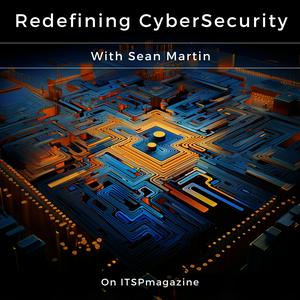
Get the free radio.net app
- Stations and podcasts to bookmark
- Stream via Wi-Fi or Bluetooth
- Supports Carplay & Android Auto
- Many other app features
Get the free radio.net app
- Stations and podcasts to bookmark
- Stream via Wi-Fi or Bluetooth
- Supports Carplay & Android Auto
- Many other app features


Redefining CyberSecurity
Scan code,
download the app,
start listening.
download the app,
start listening.


